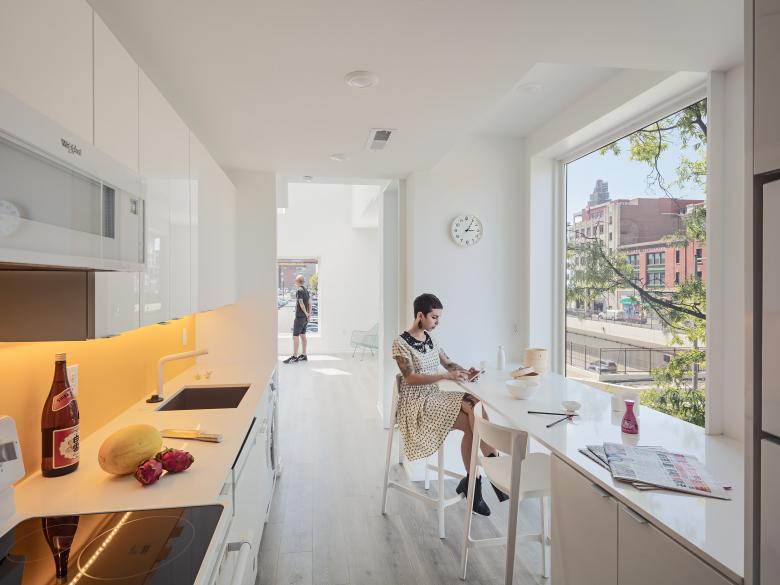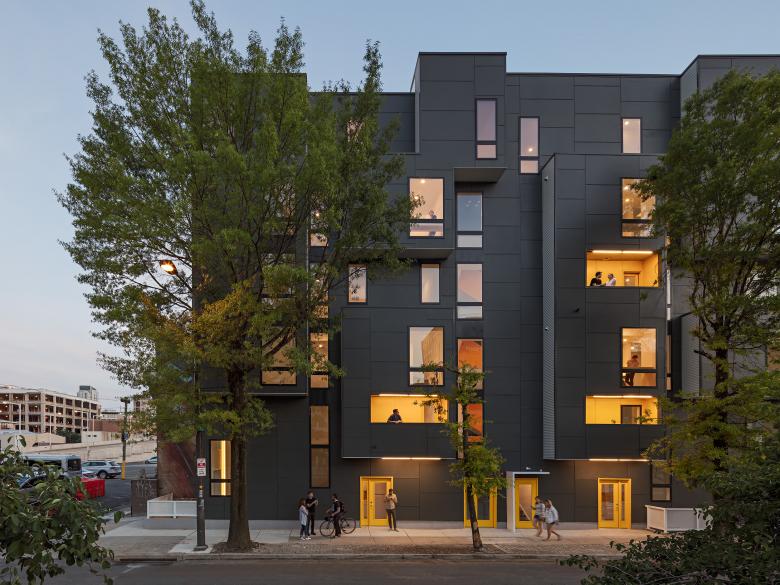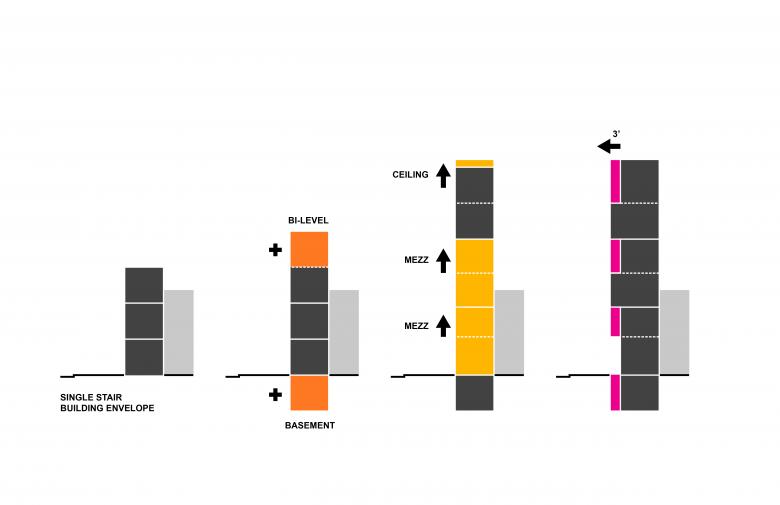U.S. Building of the Week
XS House
ISA
17. 2月 2020
Photo: Sam Oberter
At only eleven feet wide, the narrow lot for XS House was surface parking for a long time, seen as unbuildable. Strategically using bays and other other features, ISA managed to pack seven residential units on the site, setting a precedent for other leftover spaces in and beyond Philadelphia. The architects answered some questions about the project.
Location: Philadelphia, Pennsylvania, USA
Client: Callahan Ward
Architect: ISA
- Project Team: Brian Phillips, AIA, Leed AP; Deb Katz, AIA, Leed AP; Alex Gauzza, AIA, Leed AP BD+C; Matt Underwood, RA; Jason Jackson
MEP/FP Engineer: J+M Engineering
Lighting Designer: Lam Partners
Contractor: Callahan Ward
Site Area: 1,100 sf
Building Area: 5,000 sf
See bottom for important manufacturers / products.
Photo: Sam Oberter
What were the circumstances of receiving the commission for this project?XS House is a speculative multi-family apartment building designed for a return client who is a private developer (Callahan Ward Companies). The client requested our design services directly and we fulfilled the project as designer and architect-of-record.
Photo: Sam Oberter
Please provide an overview of the project.Philadelphia’s urban renewal era left behind an east-west cut through the city’s urban fabric in the form of the sunken, 100-foot-wide Vine Street Expressway. Philadelphia’s Chinatown neighborhood was one of those disconnected by the expressway, with many of its formerly inhabited blocks sliced into odd shapes and sizes. Today, the expressway continues to divide pedestrian activity, while most of the odd-shaped leftover lots are used for surface parking. XS House rejuvenates one such leftover site, adding urban density and street life while encouraging walkable lifestyles.
XS House places seven apartments on its 11-foot-wide by 93-foot-long parcel, expanding the extremely narrow footprint with strategic use of bays, mezzanines, and bi-level upper units. The expanded envelope approach emphasizes vertical living, with individual unit stairs positioned to unlock mezzanine levels, add floor area and create dramatic volume spaces. Three-foot facade projections permitted by the city zoning code further expand unit interiors at key pinch points. A single shared stair runs up the center of the building, allowing access to upper level units, while lower units enter directly from the street, activating Vine Street with additional foot traffic.
Photo: Sam Oberter
What are the main ideas and inspirations influencing the design of the building?Ideas of simple, off-the-shelf construction deployed in unexpected ways was a guiding principle here, and for a lot of our work in general. The extreme site geometry pushed us to go vertical, exploring the maximum height of a single-stair wood-frame building. Philadelphia was an inspiration to us here – its generous zoning code featuring small parking ratios (no spaces required here) and high densities allowed this to be an as-of-right project.
We were generally inspired by the wonderful small houses and housing blocks of Tokyo.
Photo: Sam Oberter
How does the design respond to the unique qualities of the site?The project placed seven residential units on the existing site, operating within the allowable envelope and dimensional constraints for its commercial mixed-use (CMX-4) zone. Three of the units are directly accessed from the main frontage along Vine Street, with the remaining four are accessed from a single shared egress stair extending from the ground to the third floor. Two bi-level two-bedrooms (800 SF) on floors three and four and two micro-loft one-bedrooms (500 SF) on floor two are accessed via the common stair. Two additional micro-loft one-bedrooms (500 SF) and a basement level one-bedroom flat (500 SF) are accessed directly from Vine Street. The central stair was designed to incorporate building amenities necessary for contemporary lifestyles within a small footprint, including a mail area accessible to all residents at street level and a car-share waiting area with built-in bench seating and a view of the street on the level above.
Photo: Sam Oberter
Was the project influenced by any trends in energy-conservation, construction, or design?The design solution placed seven units of compact housing on the site, creating new opportunities for low-carbon-footprint urban living. Residential units were designed to be compact in floor area, allowing right-sized HVAC systems. Large operable windows provide ample daylighting and ventilation, and LED lighting creates a minimal energy load.
Access to natural light and a walk-up configuration for all units encourages healthy lifestyles for residents. A highly connected urban site adds to the positive health impacts of the project, encouraging strong social networks and sustainable communities.
The building was largely framed with wood structural members, a renewable material. Building cladding included sustainable fiber cement panels along the primary facade.
Email interview conducted by John Hill.
Photo: Sam Oberter
Important Manufacturers / Products:- Exterior Cladding (Fiber Cement Panels): James Hardie Reveal System
- Exterior Cladding (Metal Cladding): Englert Corrugated
- Windows: Fiberframe Frame: Anderson 100
- Interior Lighting: Klus LED strip, Bartco
- Entrance Door: Therma-Tru Smooth Star









